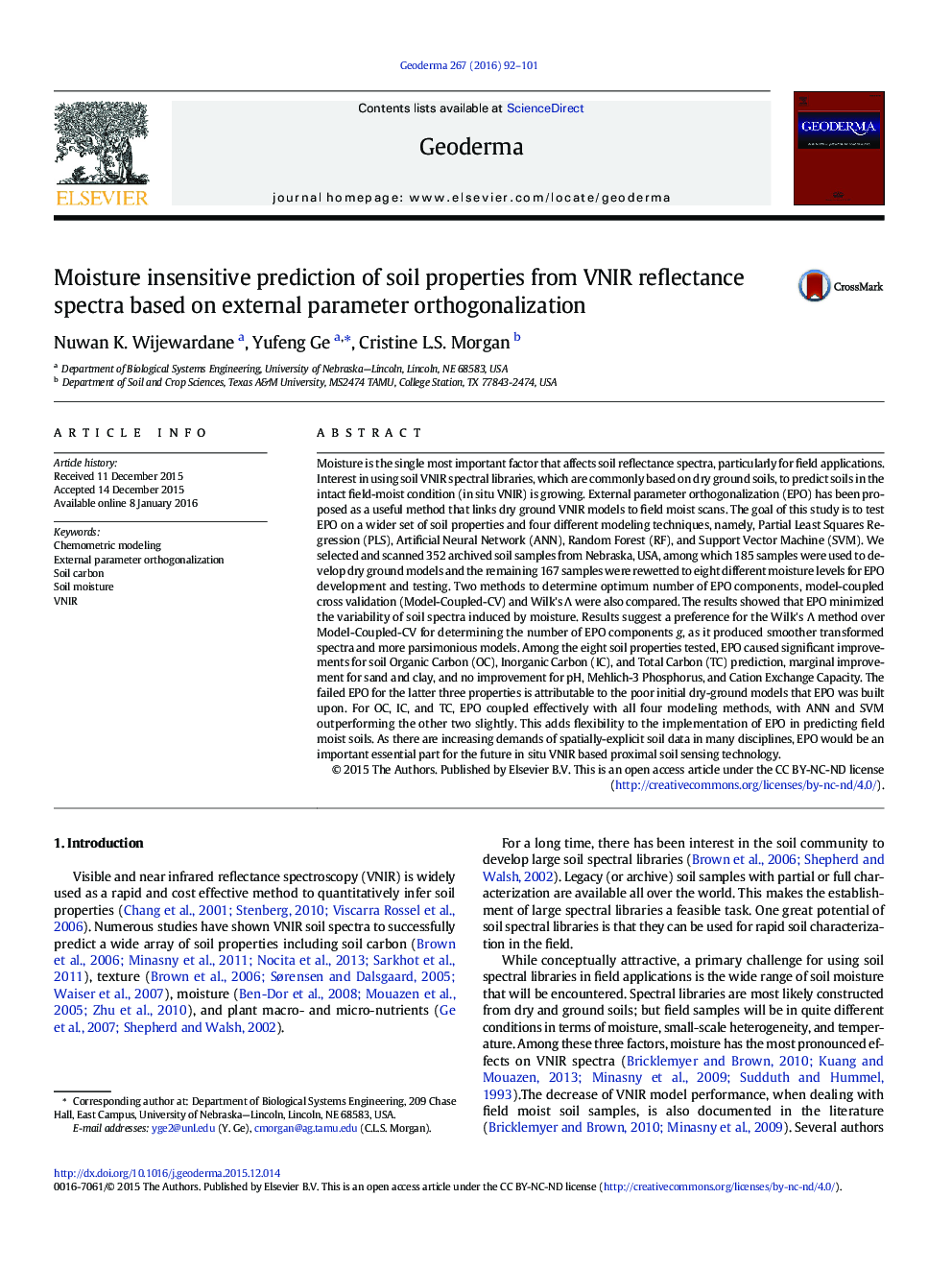| کد مقاله | کد نشریه | سال انتشار | مقاله انگلیسی | نسخه تمام متن |
|---|---|---|---|---|
| 6408378 | 1629450 | 2016 | 10 صفحه PDF | دانلود رایگان |

- Two EPO methods: model-coupled-CV and Wilk's Î, are studied and compared.
- Wilk's Î is a viable method to determine the number of EPO components.
- EPO improves prediction for soil Organic C, Inorgnic C, and Total C.
- EPO effectively couples with RF, ANN, and SVM for moisture insensitive modeling.
Moisture is the single most important factor that affects soil reflectance spectra, particularly for field applications. Interest in using soil VNIR spectral libraries, which are commonly based on dry ground soils, to predict soils in the intact field-moist condition (in situ VNIR) is growing. External parameter orthogonalization (EPO) has been proposed as a useful method that links dry ground VNIR models to field moist scans. The goal of this study is to test EPO on a wider set of soil properties and four different modeling techniques, namely, Partial Least Squares Regression (PLS), Artificial Neural Network (ANN), Random Forest (RF), and Support Vector Machine (SVM). We selected and scanned 352 archived soil samples from Nebraska, USA, among which 185 samples were used to develop dry ground models and the remaining 167 samples were rewetted to eight different moisture levels for EPO development and testing. Two methods to determine optimum number of EPO components, model-coupled cross validation (Model-Coupled-CV) and Wilk's Î were also compared. The results showed that EPO minimized the variability of soil spectra induced by moisture. Results suggest a preference for the Wilk's Î method over Model-Coupled-CV for determining the number of EPO components g, as it produced smoother transformed spectra and more parsimonious models. Among the eight soil properties tested, EPO caused significant improvements for soil Organic Carbon (OC), Inorganic Carbon (IC), and Total Carbon (TC) prediction, marginal improvement for sand and clay, and no improvement for pH, Mehlich-3 Phosphorus, and Cation Exchange Capacity. The failed EPO for the latter three properties is attributable to the poor initial dry-ground models that EPO was built upon. For OC, IC, and TC, EPO coupled effectively with all four modeling methods, with ANN and SVM outperforming the other two slightly. This adds flexibility to the implementation of EPO in predicting field moist soils. As there are increasing demands of spatially-explicit soil data in many disciplines, EPO would be an important essential part for the future in situ VNIR based proximal soil sensing technology.
264
Journal: Geoderma - Volume 267, 1 April 2016, Pages 92-101